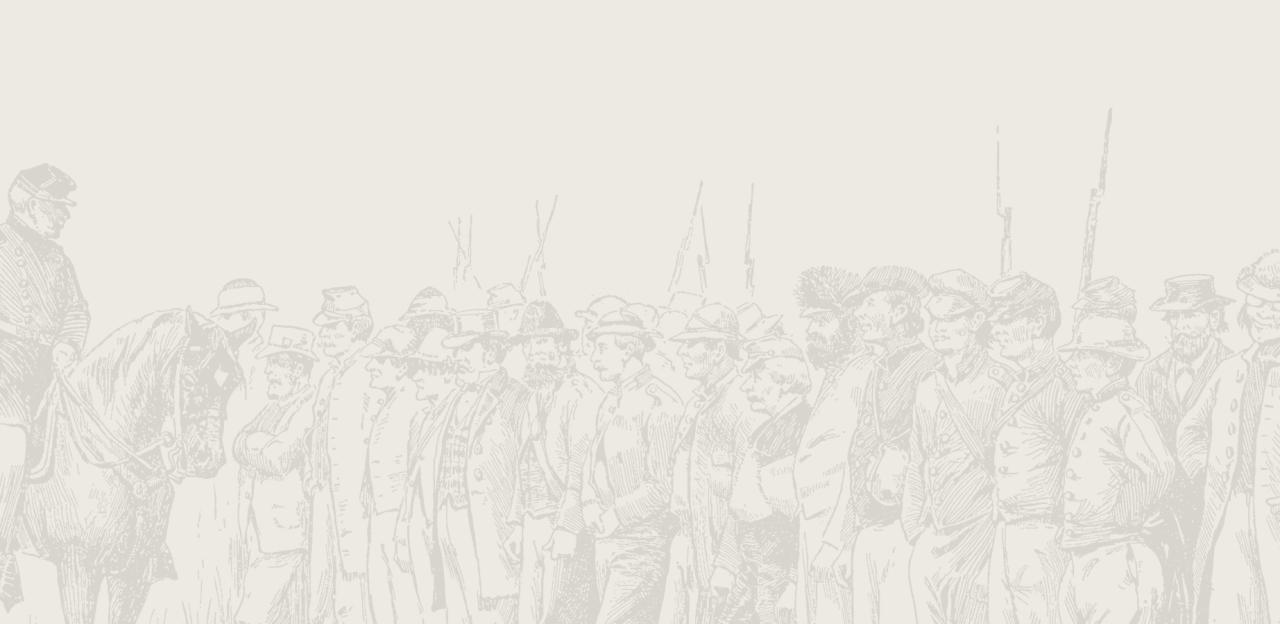Chattanooga

The Battle of Chattanooga
Missionary Ridge, Lookout Mountain
Following the devastating loss at the Battle of Chickamauga, Union General William Rosecrans retreated to Chattanooga, Tennessee. Confederate General Braxton Bragg, looking to capitalize on his victory against Rosecrans, followed the Federals to Chattanooga and established positions on Missionary Ridge and Lookout Mountain, successfully putting the Union troops under siege and cutting off their supply line. On October 17, General Ulysses S. Grant was given control over the newly-created Military Division of the Mississippi, effectively putting all Federal troops in the Western Theatre—including the Army of the Cumberland—under Grant’s control. In the days that followed, Grant learned that Rosecrans was planning to withdraw the Army of the Cumberland from Chattanooga, thereby surrendering the strategically important city. Grant immediately replaced Rosecrans with General George H. Thomas and ordered Thomas to hold Chattanooga, to which he responded “we will hold the town till we starve.” In an effort to send support to the beleaguered men of the Army of Cumberland, Grant set up “The Cracker Line” to move food to the soldiers at Chattanooga.
On November 23, Grant received word from Confederate deserters that Bragg was withdrawing some of his brigades. Upon seeing columns of Confederates marching away from Missionary Ridge, Grant became concerned that Bragg was sending troops to reinforce Confederates under General James Longstreet near Knoxville. In an effort to prevent this, Grant sent 14,000 Union troops to engage a rear-guard of 600 Confederates at Orchard Knob. The vastly outnumbered Rebels were able to get off only one volley before being overrun by the Federals. Orchard Knob served as Grant’s headquarters for the remainder of the battle.
The next day, General Joseph Hooker struck the Confederate left at Lookout Mountain. Initially, Grant did not view taking Lookout Mountain as a priority; however, at the time of attack Grant directed Hooker to push on to Point Lookout if it became practicable. Hooker had three divisions under his command led by Generals John W. Geary, Charles Cruft, and Peter J. Osterhaus. At 10:30, Geary’s men made contact with Confederate General Edward Walthall’s men one mile southwest of Point Lookout. The Confederates’ inferior numbers were quickly driven back. At 1:00 P.M. Confederate General John C. Moore launched a counter-attack against the surging Union forces, but the Rebels found themselves severely outflanked and retreated through the fog. That night Bragg held a council with his generals and decided to withdraw from Lookout Mountain to reinforce Missionary Ridge, giving Grant the second victory of the battle.
Initially, Granted wished for General William T. Sherman to attack Missionary Ridge in coordination with Hooker’s attack at Lookout Mountain. However, faulty intelligence led Sherman’s men to Billy Goat Hill, which was physically separated from Missionary Ridge. Undaunted, Grant determined to follow up the success of November 24, with a coordinated effort the following day. Hooker would advance on Missionary Ridge from the south while Sherman would attack Tunnel Hill, on the northern end of the Confederate position. Thomas’ Army of the Cumberland was arrayed against the center of Bragg’s line to offer assistance as needed.
On November 25, Sherman’s men experienced early successes, but a counter-attack from the Confederates routed the exhausted Federals. The attack on Tunnel Hill came to a halt at 4:00 P.M. On the Confederate left, Hooker found more success than Sherman. After arriving at Rossville Gap, the southernmost point of Missionary Ridge, Hooker launched a three-pronged attack that left the surprised Confederate troops surrounded and they quickly surrendered. At 2:30 P.M. Grant ordered Thomas to demonstrate against the Confederate center, and draw Bragg’s attention away from Sherman. Gen. Thomas deployed 24,000 men against rifle pits at the base of the Ridge. The Union soldiers charged against the pits and successfully overran the 9,000 defenders. Despite Grant’s orders to the contrary, Thomas’ men continued their charge, swarmed over the ridge, and overwhelmed the Confederate defenders. With no tactical reserve in place, the thinly-manned Confederate line broke and fled from Missionary Ridge thus ending the siege of Chattanooga.
Union possession of Chattanooga opened up the Deep South for a Union invasion. The stage was set for Sherman’s Atlanta Campaign the following spring.


